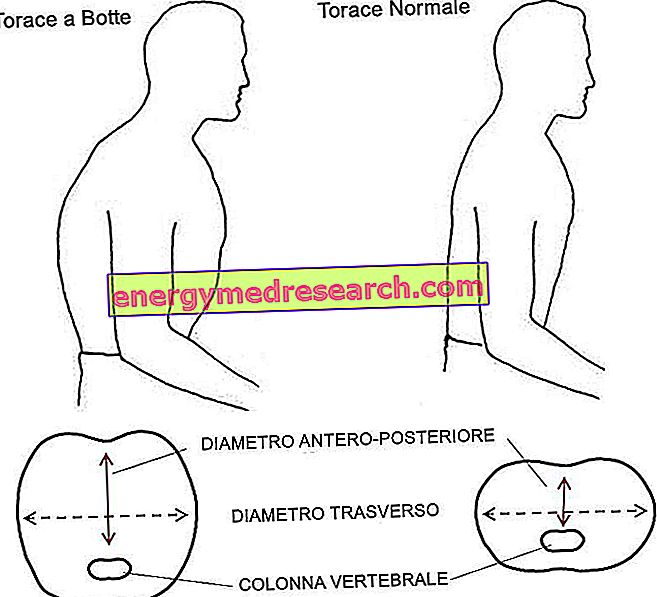
In the image we can appreciate the differences between a normal chest (right) and a barrel chest (left).
The shape of the normal thorax is elliptical, with the transverse diameter (width of the thoracic cage) which is greater than the antero-posterior one (depth).
In the barrel chest, instead, an increase in the antero-posterior diameter is appreciated, so that the thoracic cage appears deeper. At the level of the spine, moreover, an increase in dorsal kyphosis and lumbar lordosis can be noted, while the ribs see their normal inclination downwards reduced.
Since the barrel chest often depends on respiratory disorders such as COPD, a hypertrophy of the sternocleidomastoid muscles (lateral neck muscles) and a reduction in the normal distance between the sternal fork (upper part of the sternum) may also become visible at neck level and the thyroid cartilage (Adam's apple). These alterations depend on chronic hyperinflation: due to the respiratory disease, the lungs are unable to empty themselves completely during expiration, forcing the subject to inflate the rib cage more and more to be able to breathe, involving the accessory respiratory muscles in an important way.
In acromegaly, on the other hand, the barrel chest depends on an abnormal growth of the costal cartilage under the stimulus of exaggeratedly high levels of GH that characterize the disease.



